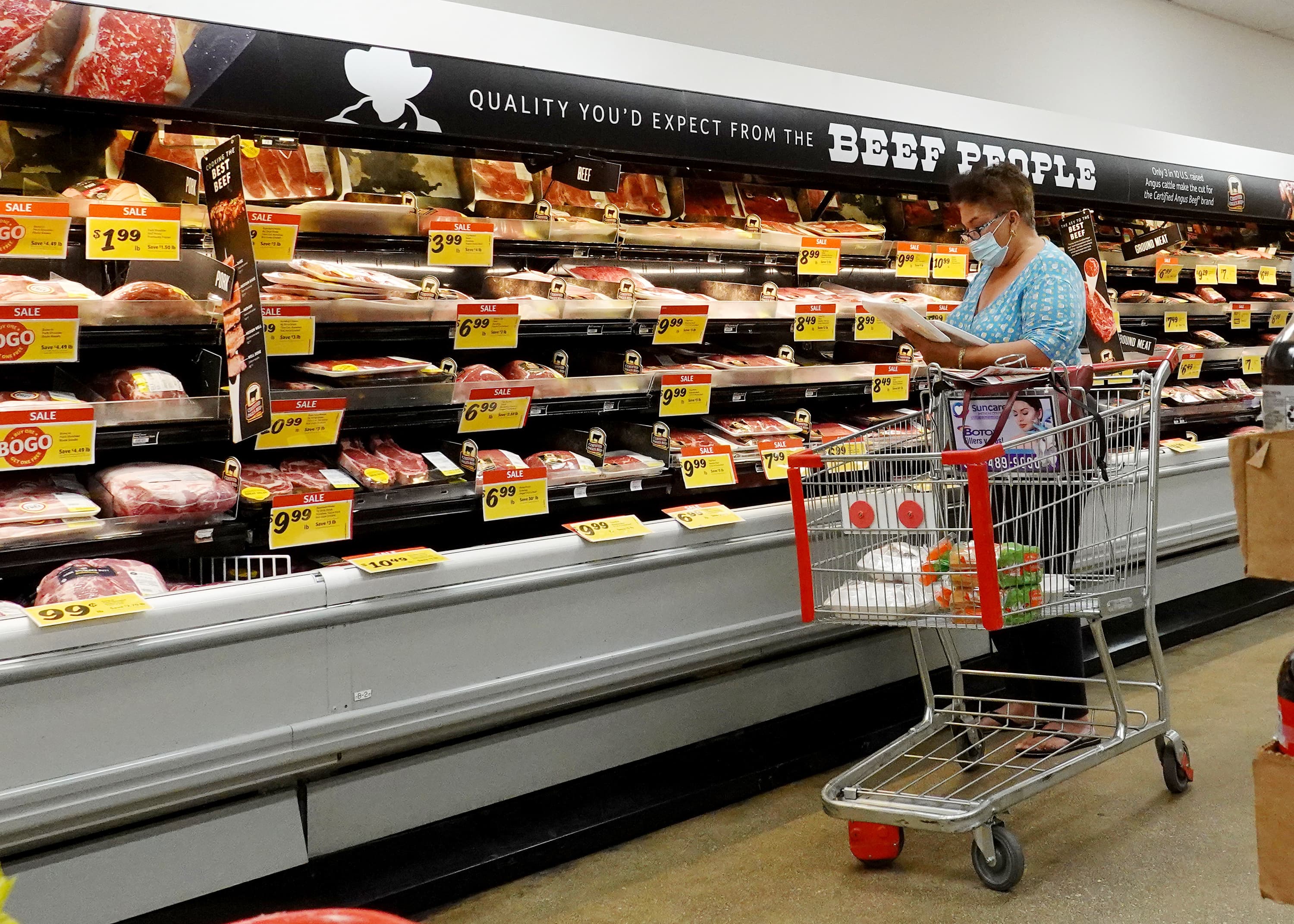Products You May Like
Food and drink prices are rising, but CEOs from PepsiCo’s Ramon Laguarta to Tyson Foods’ Donnie King say consumers aren’t balking yet at paying more for their Lay’s chips and chicken nuggets.
Inflation has led many food and beverage companies to raise prices by shrinking package sizes, cutting promotions or outright price increases at the grocery store. But companies have to strike a delicate balance, raising prices enough to offset higher costs without making products too expensive for consumers, who could always trade down to cheaper alternatives like private-label brands.
“We’re feeling good about how our consumers are staying loyal to our brands in spite of some of our pricing decisions,” Laguarta said on Pepsi’s earnings call in early February.
In January, the producer price index for final demand rose 1%, according to the Bureau of Labor Statistics. The metric tracks rising costs paid by domestic producers for commodities. For food, prices ticked up 1.6% compared with December and 12.3% compared with 12 months ago.
Consumers, on the other hand, saw food prices tick up 0.9% in January compared with a month earlier and 7% compared with the year-ago period, according to the BLS’ consumer price index. Many shoppers have had more cash to spend at the grocery store after receiving government stimulus checks during the Covid pandemic and changing other behaviors, like traveling and eating out less.
These inflation measurements came before the Russian invasion of Ukraine, which has already led to surging prices for oil and gas, metals and grains — all key exports of Russia. Aluminum prices hit a record high of $3,450 per ton on the London Metal Exchange. Still, most companies hedge to protect themselves from short-term spikes in commodity prices, although at this point it’s unclear how long the crisis will persist and when shoppers will start feeling the pinch.
‘Cracks in the foundation’
On Thursday, Procter & Gamble, which manufactures consumer staples like Tide detergent and Pampers diapers, expressed caution when talking about its ability to deal with rising inflation.
“While it’s too soon to declare success, given the strength of our portfolio, broad-based share gains and early in-market results, we feel relatively well positioned about our position to execute pricing,” CFO Andre Schulten said in the company’s virtual CAGNY presentation.
P&G has raised prices across all 10 of its U.S. categories, affecting about 80% of sales in its home market. The consumer giant might have the right approach, warning investors that there may be bumps in the road ahead.
“The cash pile that most consumers are sitting on is dwindling fast, and we are seeing elasticity start to get back to normal levels, pre-pandemic, and with inflation and gas prices, we’re seeing pockets of the market where we’re starting to see some weakness,” RBC Capital Markets analyst Nik Modi said an interview.
Modi said that categories that tend to skew lower income, like tobacco, beer and energy drinks, are beginning to see consumers trading down to cheaper options.
“There’s cracks in the foundation, and we’ll have to monitor it,” he said.
Walmart, the largest grocer in the U.S., said shoppers are paying attention to rising prices and inflation, even if it isn’t showing up in their behavior yet. CFO Brett Biggs said in an interview last week with CNBC that low unemployment, rising wages and an increase in household savings during the pandemic mean the average consumers is still in good shape.
Miller Lite brewer Molson Coors Beverage echoed that line of thinking during its earnings call Wednesday. The beverage company raised its prices by 3% to 5% in January and early February — sooner than its usual springtime hikes and at a slightly higher-than-typical level.
“Frankly, the price increases, as I just said, for us, 3% to 5%, well lower than inflation rates, which are sticking in the consumers’ minds,” CEO Gavin Hattersley said.
Price hikes face backlash
Even if consumers aren’t shying away from higher prices yet, some companies have already garnered criticism for raising prices to protect their profit margins.
For example, Sen. Elizabeth Warren, a Massachusetts Democrat, has taken aim at Tyson for its price hikes, saying the increases have surpassed necessary levels because the company doubled its fiscal first-quarter profit.
Tyson is already under scrutiny from the Biden administration, which has contended that consolidation in the meatpacking industry has driven up prices for beef, chicken and pork in recent years.
But Tyson has defended its actions. In a statement to CNBC, the company said, “Economists and industry analysts confirm that today’s higher meat prices are a direct result of constrained supplies due to the labor shortage, higher input costs for such things as grain, labor and fuel, and stronger consumer demand.”
In early February, Tyson said its cost of goods sold was up 18% compared with the year-ago period. In response, its average sales price for its fiscal first quarter climbed 19.6%.
“This helped us capture some of the unrecovered costs due to the timing lag between inflation and price,” CEO King said on the company’s latest earnings call with analysts.
Tyson executives also shared that consumers aren’t yet balking about paying more for prepared foods, which includes its Jimmy Dean and Hillshire Farm brands.
RBC’s Modi said the cost increases faced by companies like Tyson are real.
“Now, do they need to take the pricing? Not to survive, but they need to take them to protect their margins,” he said. “Protecting their margins allows them to reinvest in marketing, in [research and development].
“Quite frankly, the retailers wouldn’t let them take cost increases if it wasn’t justified,” he added.
For example, Walmart CEO Doug McMillon said on its recent earnings call that the retailer leans on its long relationships with food and beverage companies to keep prices down for customers.
“During periods of inflation like this, middle-income families, lower middle-income families, even wealthier families become more price sensitive,” McMillon said.
